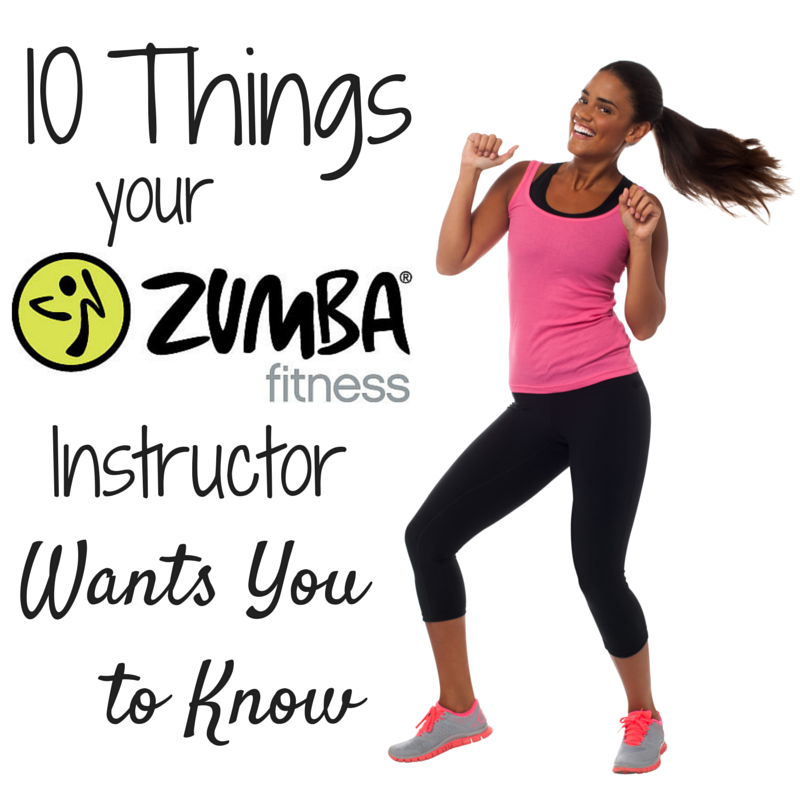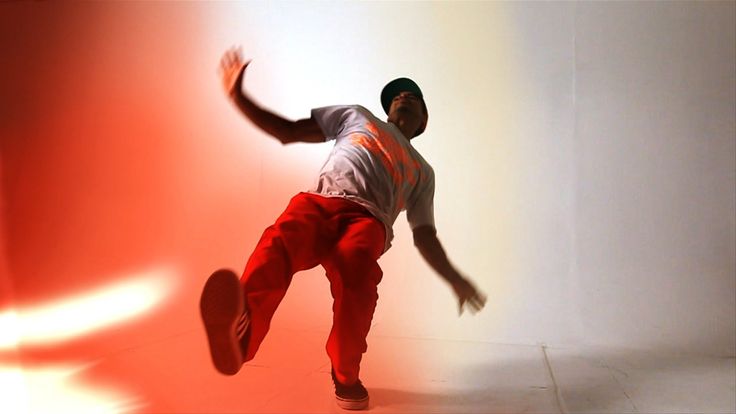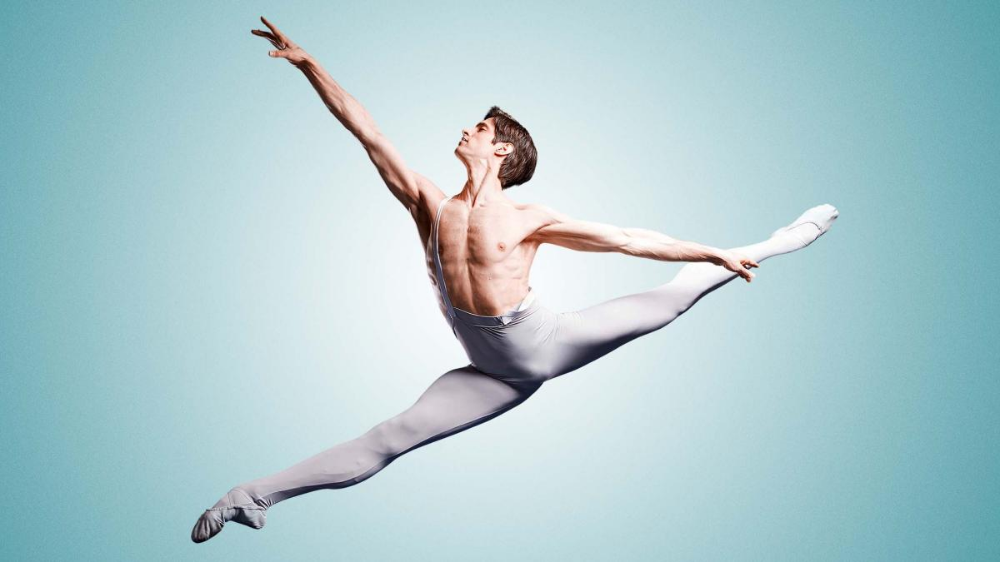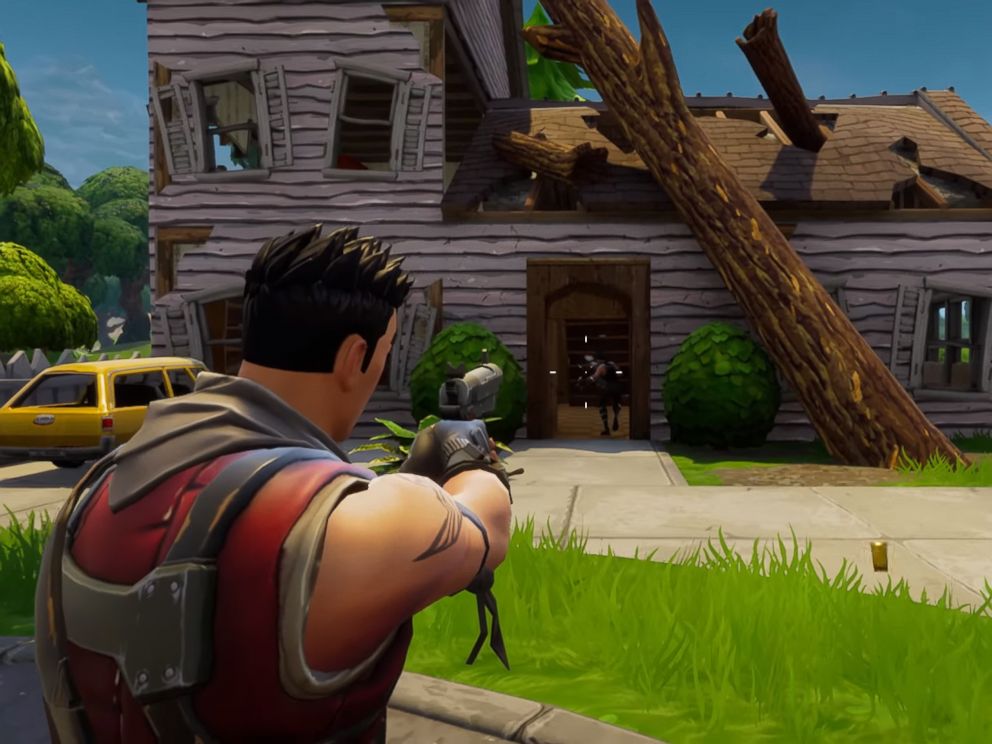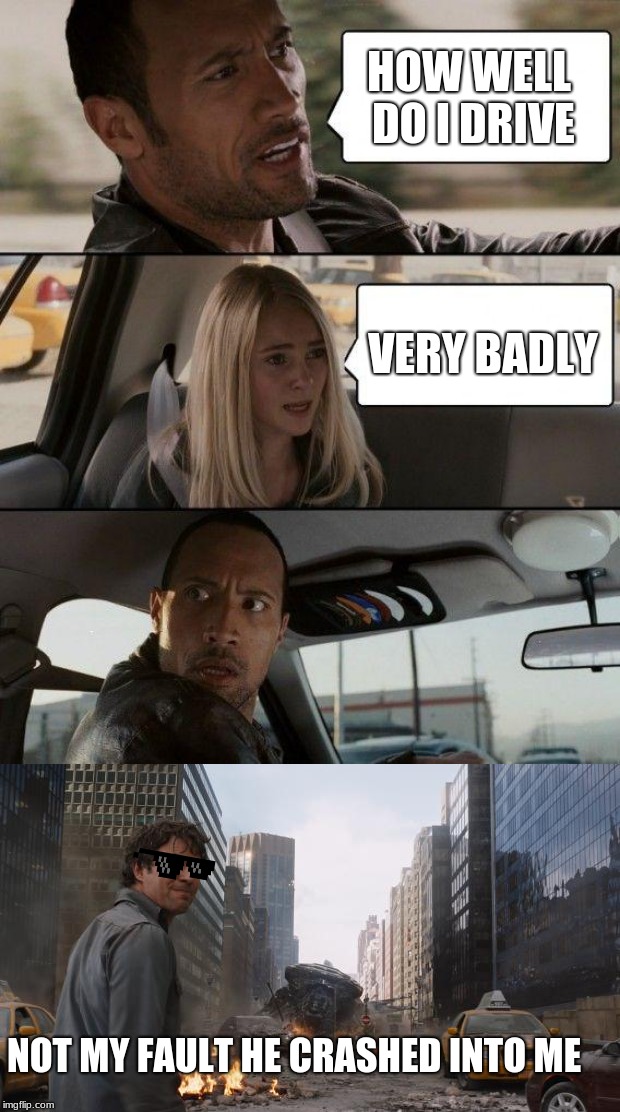How to improve in dance quickly
5 Simple Daily Practices To Improve Your Dancing
Finding time to improve your dance skills can be really, really tough.
You may want to become a better dancer, but how can you fit 1-2 hours of dance class between work, school, a social life, and EVERYTHING else!?
Even if you can't make it to class, you can still improve your dance skills with a few simple, daily practices.
Just follow these tips to keep leveling up, every. Single. Day.
One of the best ways to start your day is with a morning stretch!
Stretching will help you improve your dancing by making you more flexible and increasing your range of motion.
It will also reduce the risk of injuries like pulled muscles.
Your routine doesn’t have to be long or intense – you just have to get your body moving.
Watch this video to learn how to (and how not to) stretch!
We also have a quick and easy stretching class you can take on STEEZY Studio!
"Muscle memory" is the ability to execute a movement without having to think about it.
You can practice muscle memory by doing doing the same technique, skill, or routine over and over again.
For example, if you want to practice certain things like isolation or hitting, take breaks during work or studying to do some drills.
Repetition will help your body remember moves and choreography, so that with enough practice, you will be able to do them automatically.
And on that note...
Have you ever watched someone do a routine they learned 5 years ago, and they do it flawlessly, like they just learned it yesterday?
It's because they didn't stop practicing when the class was over! Review pieces you’ve learned to keep them fresh in your mind.
This conditions your brain to consistently think about body placement.
Chances are, dance videos are probably what got you into the dance in the first place.
Watching is not the same as doing, but it can be just as valuable as practice.
If you watch a video with the intent to learn from it, you'll still grow as a dancer.
As you watch, think about the connections between the movements, how the choreographer interpreted certain sounds, their performance, the execution, etc.
Not sure where to start? You can always check out STEEZY's channel for the newest videos by top choreographers!
This one’s hard – I mean, who wants to give up hot cheetos and peach rings?
But poor eating habits can be detrimental when you really want to improve your dancing.
Plan your day ahead and pack some fruits or veggies. Or throw a granola bar in your bag if you’re on the go.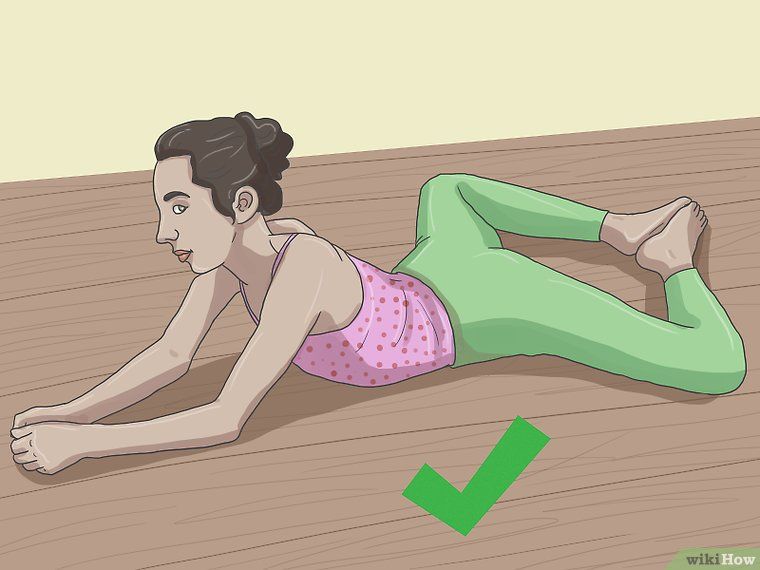
Junk food can give you quick bursts of energy, but will ultimately make you feel weighed down.
Healthier foods energize you more sustainably, and good eating habits will lead to better health in the long run.
That means, your body will be able to dance longer, stronger, and better!
If you can’t set aside time for a traditional class, try taking a class online with STEEZY Studio!
Each class is broken into bite-sized sections that you can take anytime, anywhere, at your own pace.
You can improve your dance skills by taking shorter classes that focus on fundamentals, or learn a whole piece by working on it, little by little, every day.
Want to see how it works? This explains it all:
5 Ways to Improve Your Dance Technique this Year
1 March3018August 14, 2022
5 Ways to Improve Your Dance Technique this Year
How to Improve Your Dance Technique
If you’re looking to improve your dance technique in 2018, there are several factors to explore. First, congratulations on taking the first step! Often times the hardest part of setting a new goal is getting started. You’re off to a great start by doing your research. Next, it’s important to remember that significant progress takes time and won’t happen overnight. Improvement takes daily, or at minimum, weekly practice. Consistency is key! Whether you’re a beginner dancer or you’ve been dancing for several years, consider the following tips to improve your dance technique this year.
First, congratulations on taking the first step! Often times the hardest part of setting a new goal is getting started. You’re off to a great start by doing your research. Next, it’s important to remember that significant progress takes time and won’t happen overnight. Improvement takes daily, or at minimum, weekly practice. Consistency is key! Whether you’re a beginner dancer or you’ve been dancing for several years, consider the following tips to improve your dance technique this year.
1. Stretch daily
Although it may seem elementary, it’s important to remember to stretch every day to improve your dance technique. Your stretching routine doesn’t need to be long or overly complicated, however “the simple act of getting up and getting your body moving is a great way to jump start the day. Stretching will help you improve your dancing by making you more flexible and increasing your range of motion. It will also reduce the risk of injuries like pulled muscles (Steezy, 2017).
Here are a few things to avoid when stretching, via DanceTeacher:
- Avoid trying to progress too quickly in your stretching, which can strain or sprain ligaments, tendons or muscles. Dancers need to gradually increase stress on muscles so they have time to adapt.
- Warming up properly before stretching is essential. If you’re stretching a cold muscle, or stretching for so long that muscles get cold, you actually end up stretching the joint instead.
- Perhaps most importantly, strength building should go hand in hand with stretching. Focusing on strength can benefit your functional flexibility more than anything else.
Explore “Stretching For Dancers” below for some worth-while tips:
2. Don’t be afraid to challenge yourself!
Improving your dance technique can include exploring new types of dance, trying different routines and pushing yourself outside of your comfort zone (safely, of course).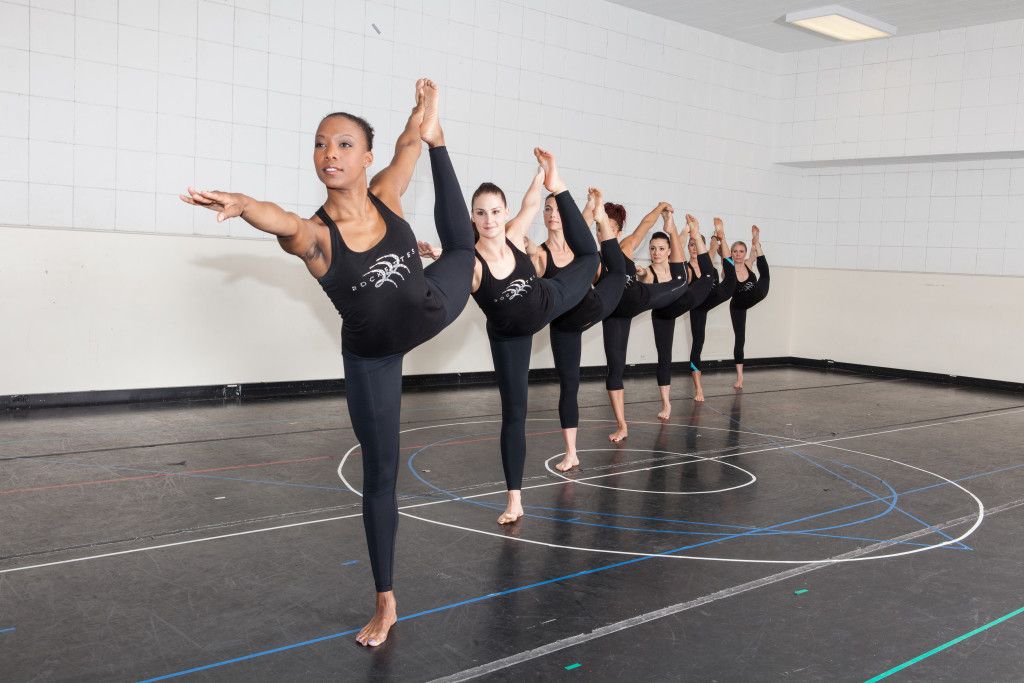 Ask your dance instructor about other types of dance offered at your studio, that you haven’t tried before. Then, make a point to sit in on a class and observe.
Ask your dance instructor about other types of dance offered at your studio, that you haven’t tried before. Then, make a point to sit in on a class and observe.
If you’re not interested in exploring new types of dance, then review pieces you’ve learned before and make a point to re-master them. “Do you ever play a set from 5 years ago during practice, and watch someone do it flawlessly, like they just learned it yesterday?… (That can be you) if you just practice!” (Steezy, 2017). Condition yourself not to stop practicing or learning, long after a performance or routine is through.
3. Tell yourself you can do it
Never discount the power of positive thinking! “Negative thoughts are only going to bring you down, literally” (rockettes, 2018). Learning new techniques, a different style of dance, or even committing to perfect your stretching can all seem super intimidating. Remember to give yourself credit for wanting to improve- starting is always the hardest part when trying to achieve a new goal! Try telling yourself “I can do this,” out loud, before trying your new activity. Over time, the simple act of declaring confidence in yourself will begin to convince your inner critic. You’ve got this!
Over time, the simple act of declaring confidence in yourself will begin to convince your inner critic. You’ve got this!
4. Videotape yourself dancing
Are you super clear on specific elements of your dance technique that you want to improve? If not, videotaping yourself dancing is a great way to start. Ask your dance instructor, a friend or a family member to capture you practicing a particular routine so you’re able to review your performance. By watching yourself dance, it will become much clearer which areas need improvement. Don’t be afraid to ask your dance instructor to watch the video with you as well. It may be helpful to hear their expert opinion on the areas you should focus on to improve.
5. Ask Your Teacher for Help
Your dance instructor is invested in your success as a dancer. They’re committed to helping you achieve whatever your specific dance goals may be, from improved flexibility to learning a new, rigorous routine.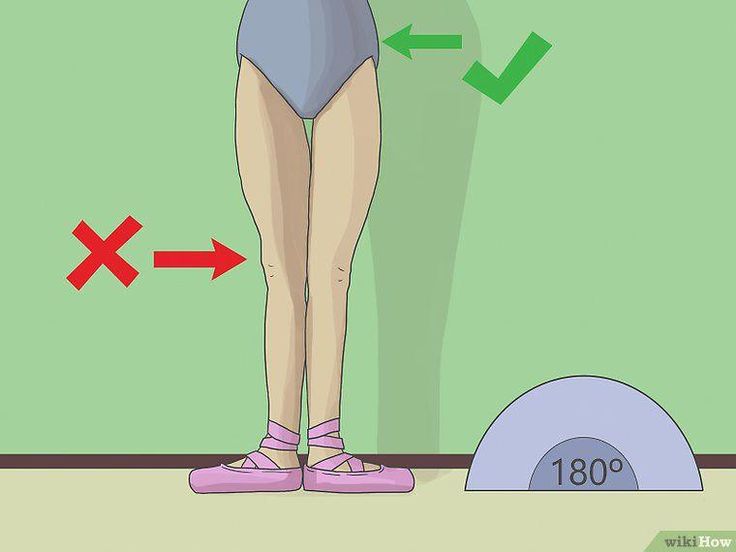 Don’t hesitate to ask them for help when it comes to going after a new goal.
Don’t hesitate to ask them for help when it comes to going after a new goal.
“Instead of just going to class, dancing and going home, get help from others to improve your dance technique… Ask an instructor to give you all the corrections possible and learn from your mistakes. You will always be improving your dance technique so why not use all of the sources possible to do so? It doesn’t cost anything to watch and get help from others. But by taking the time to do so, you can see significant improvements in your dancing fast!” (Dance Full Out, 2012).
Share this post?
5 tips to help you make progress in dancing
Is it possible to quickly improve your dancing skills with a few simple and effective steps? Yes! Read our tips to improve your dance technique.
Whether you're a beginner or an experienced dancer, whether you're into ballet, modern jazz, hip hop, or any other style, these 5 tips will help you reach your peak.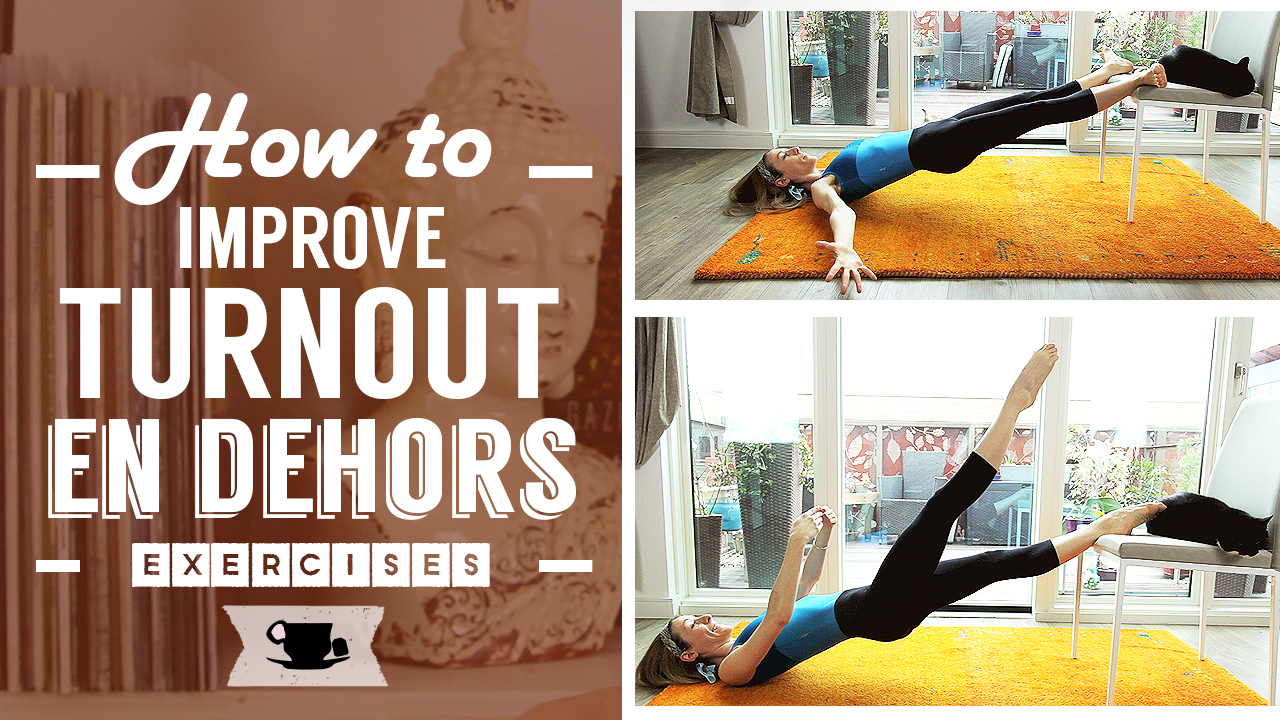
Would you like to change your dance costume while keeping the same clothes? This can be done with a single accessory or piece of clothing - a favorite item that can be worn in many ways.
Depending on your style of dancing or how you feel at the moment, you can wear this piece however you want right now to give yourself a whole new look.
Your dancewear is part of your expression, so get creative by choosing an outfit that reflects your personality. Mix styles and develop your creativity.
What dancer has not had difficulty maintaining balance during the batman retreat or when performing a pirouette without a somersault?
To keep a good balance, remember this: when you move into a half-pointe position, automatically think about getting taller, as if someone is pulling you up. Press down on the ground with the foot that touches the floor to keep a firm footing. Also pay attention to the muscles of the core: tighten the stomach, imagining that the navel should touch the spine, and tighten the gluteal muscles.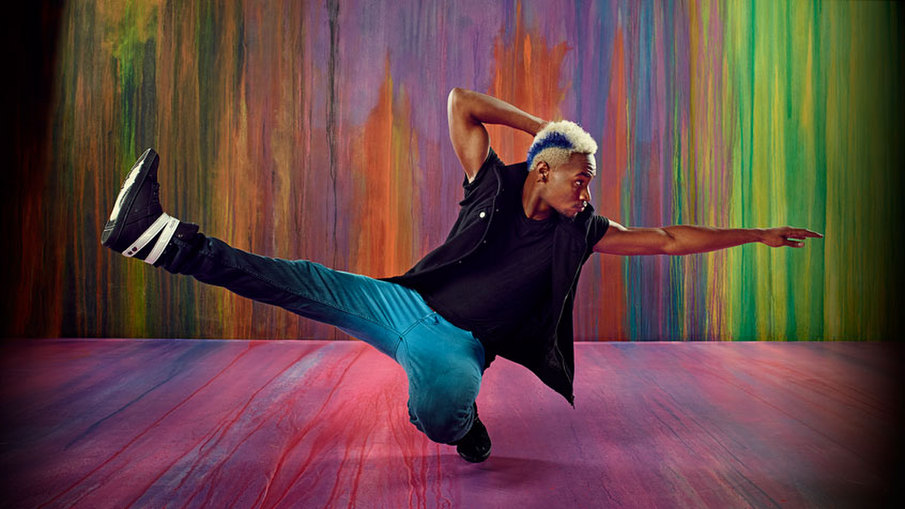
Dancing is not always easy to gracefully express yourself and see your body moving smoothly and elegantly. However, viewers often pay attention to the upper half of the dancer's body. To become more graceful, try to move in a relaxed way and keep a natural expression on your face. No one should notice the slightest sign of effort in your eyes!
Free your head and let it move, don't tense up. Do not spread or close your fingers as if you are holding something. A good dancer should have "light" hands. Your fingers should be controlled but relaxed (imagine water dripping from your fingertips and focus on the sensation).
Watch how you hold your hand: from the shoulder blades to the very nails. Keep your elbow from "falling" by taking care to support your wrist. Good support and resistance will help you shape curves that are smooth and elegant!
Flexibility is not required in dance, but it remains a highly sought-after characteristic for many dancers nonetheless.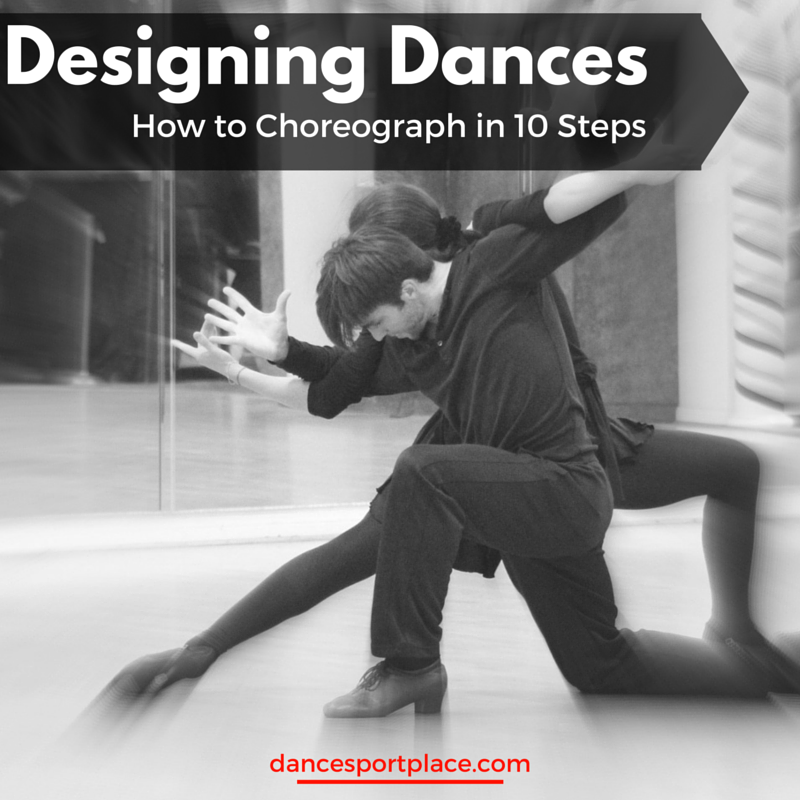 If it is not an innate trait, it can be developed gradually, with patience and care, given the capabilities of your body.
If it is not an innate trait, it can be developed gradually, with patience and care, given the capabilities of your body.
To make your body more flexible, we recommend a special exercise - splits . It is recommended to perform it only under the supervision of trainer ! Find a trainer at All Do Sport to train efficiently and safely.
First, warm up for 10 minutes, alternating several basic exercises. Sit on the floor with your legs together in a butterfly position and do a few rolls on your back. Then warm up your legs with a few exercises, do a series of jumps and a few deep lunges, and move on to the next:
- Execution: lie on your back and put your feet on the wall. Use your hands to move as close to the wall as possible. Touch the wall with your buttocks. Straighten your legs up and stretch your toes, keeping your feet and knees together. Legs and buttocks should rest on the wall.
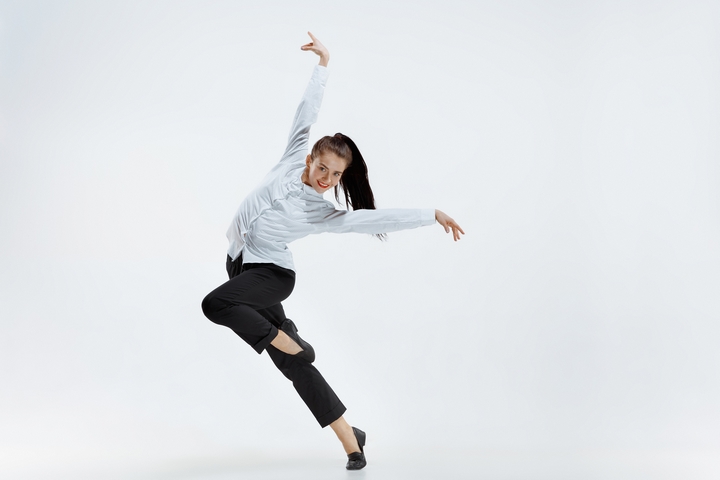 Start slowly spreading your legs apart. Lower them down to the most extreme position. Fix this position and try to relax, allowing gravity to push your legs towards the floor. Lightly press your hands on your feet. Gradually open your legs wider and wider, stretching your muscles.
Start slowly spreading your legs apart. Lower them down to the most extreme position. Fix this position and try to relax, allowing gravity to push your legs towards the floor. Lightly press your hands on your feet. Gradually open your legs wider and wider, stretching your muscles. - Breathing: inhale deeply and exhale slowly throughout the exercise to relax and oxygenate your muscles. This will gradually help your body become more flexible.
- Safety tips: make sure you keep your buttocks firmly against the wall and your back against the floor throughout the exercise. Pull in your stomach and lower your legs as low as possible, but not with force!
Do this exercise once every 15 minutes.
If you are already flexible enough, put on ankle weights such as Gym Weight Domyos. They will increase muscle tension and add extra inches to your stretch!
Before the performance, it is important to take time for yourself and relax. Every dancer has their own set of tips for overcoming fear on stage. Do you want to know the proven way? Learn to relax through conscious and deep belly breathing.
Every dancer has their own set of tips for overcoming fear on stage. Do you want to know the proven way? Learn to relax through conscious and deep belly breathing.
Really deep breathing brings a sense of calm and awakens your mental powers. It also helps to better oxygenate your muscles. To feel good about your body and mind, do this relaxation exercise while preparing for the performance and on the day of the event itself:
- Sit with your back against a wall or lie on your back
- Breathe in through your nose, slowly and deeply
- Place one hand on your belly and exhale through your mouth (you can gently press on your belly with your hand)
- Then inhale through the nose, expanding only the belly (the belly should rise)
- Exhale slowly through your mouth. Your exhalation should be slower than your inhalation.
- Repeat the whole sequence three times
Now you know 5 secrets that will help you improve your dancing skills or just feel good in your body before going on stage.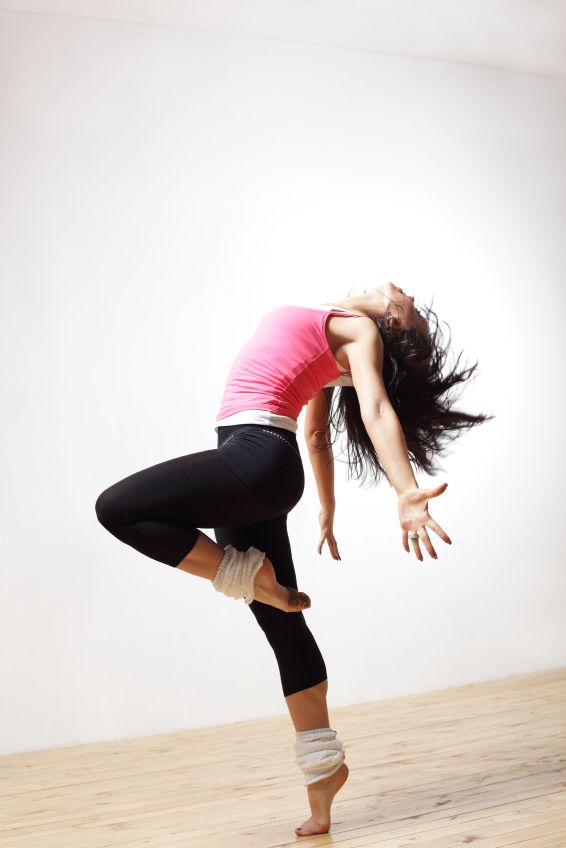 On the day of your performance, forget about everything else and focus on just one thing - the pleasure of dancing!
On the day of your performance, forget about everything else and focus on just one thing - the pleasure of dancing!
The most important skills of a dancer: ailev — LiveJournal
I came across a video by Alexander "Dragon" Kuskov, where he expresses an opinion close to mine about the necessary skills of a dancer --https://youtu.be/_OMctTXr5Cw. 1. Body control - isolation (say, the passage of a wave crest over an otherwise immobile body), fixation (for example, dimestopping)
2. Plasticity and stretching (the ability to move in amplitude and air)
3. Dancing "from music": energy from music
4. Speed control to make music visible (in kizomba it is called musicality)
5. Principles of performance: basic ideas of dance body)
6. Improvisation: combinatorics, working with space, learning to improvise with simple movements
7. Basic energy skill when dancing "from the inside" and not just "moving to the audience"
8. Ability to convey an idea when dancing (saturate the dance form with your mind ).
Yes, I once told my students: you can randomly move your hands, body and legs, not to the music - but if you achieve that at least your head (or better - a head with shoulders) will be at the same time motionless relative to the floor, then the audience will have the complete impression that you are not having inept convulsions, but just such a dance. And for those who understood what I was talking about, everything turned out many times faster than for those who did not understand.
So in August I started to restore my skills as a dancer, first of all with body control - after all, over the past thirty years of non-dancing, I completely lost isolation and fixation. Once my body control was quite at the level (I danced the robot style in my youth, and not bad!), Then I restored the isolation more or less quickly.
Of course, without body control, no basic step in the same kizomba will work. In kizomba, the body must "swim" at a constant speed, the partner is led by a frame - and this "frame" (the working area between the arm and the body) must be reliably isolated from all other movements, especially the movements of the legs and head. This is what I paid some attention to - and all my success in kizomba (and I already sometimes manage to send partners into a trance in training) can only be explained by this. But with fixation, dimestopping - there are still huge problems here, the body does not obey. Here, take a look at how fixation occurs in urban kiz - partners constantly freeze no worse than robot style performers, only they also do it in pairs, absolutely synchronously, without losing connection, dancing JoJo and Mikaela: https://youtu .be/Q6U4hvpTFoE. These dime stops (instantaneous fading at full speed) I can’t do yet - the skill is slowly remembered, but not quickly and not completely. Well, I’m unlikely to have plastic with stretching at my 58 years old at least at some level - although in kizomba this is also necessary: the body is regularly twisted there, be healthy, and plastic footwork is needed in quantity.
This is what I paid some attention to - and all my success in kizomba (and I already sometimes manage to send partners into a trance in training) can only be explained by this. But with fixation, dimestopping - there are still huge problems here, the body does not obey. Here, take a look at how fixation occurs in urban kiz - partners constantly freeze no worse than robot style performers, only they also do it in pairs, absolutely synchronously, without losing connection, dancing JoJo and Mikaela: https://youtu .be/Q6U4hvpTFoE. These dime stops (instantaneous fading at full speed) I can’t do yet - the skill is slowly remembered, but not quickly and not completely. Well, I’m unlikely to have plastic with stretching at my 58 years old at least at some level - although in kizomba this is also necessary: the body is regularly twisted there, be healthy, and plastic footwork is needed in quantity.
What's next? And then, on the basis of these skills, of course, it was necessary to learn the basics, which I honestly did for four months - exactly to the extent of restoring the body control skill and some kind of advancement in plasticity. Everything else, of course, is much easier for me.
Everything else, of course, is much easier for me.
* * *
Who has read up to this point - a bonus about the rebit. Rebita (aka massemba) is the predecessor of semba, who is the mother of kizomba. I wrote about rebitha in "where did kizomba come from" (http://ailev.livejournal.com/1319839.html):
Rebita is a dance of jokes and gags based on sex. As politically correct write in English sources, Known as umbigada, or “belly-bumping” in Portuguese, the dance is characterized by a hip thrust meant to mimic the act of procreation. But sex here is social, like a bonobo - the basis for spiritual pastime, jokes and relaxation. Watch the rebit/massemba video and you won't have any questions: https://www.youtube.com/watch?v=lKEySRc4-1k .youtube.com/watch?v=YVAfWS9ADgE), here is also quite frankly towards the end of the dance: https://www.youtube.com/watch?v=NhVo8lqY_AM, and here too: https://www.youtube.com/watch?v=URduBrGNxFc, and here it’s the other way around, grand and decent in a carnival way: https://www.At the end of January, the rebit was placed in Russia - in St. Petersburg (https://vk.com/video175030_456239031):youtube.com/watch?v=bpxONil9_mM and https://www.youtube.com/watch?v=Bzbe7BrtwwA.
Or here: https://www.youtube.com/watch?v=CAUbepspo80 - this is, by the way, Brazil. In Brazil, you can also find a rebita/massemba by the name Batuque de Umbigada -- https://www.youtube.com/watch?v=8M3BNcQnZsU, https://www.youtube.com/watch?v=Havd6FL0sdQ. But the rhythms are already diverging, the music is different. And the instruments get confused: dikanzu is called a river-river (https://vk.com/wall-6772219_2313).
As always in such cases, a remark was immediately received from the zealot of traditions Pedro Salakiako (https://vk.com /wall304031058_3134?reply=3138): "Of course it's fun, the guys did their best, but according to our tradition, the girl never gives or answers at the moment of massemba - the rebita is done by a man))) And the sound that is made at the moment of massemba does not come from touching the body, namely, kicking with an accent on the floor.
 In other ways, we also have the Angolan younger generation, those who dance not correctly, so people think that this is sex and a joke, although it is not, so it is also our fault ... ".
In other ways, we also have the Angolan younger generation, those who dance not correctly, so people think that this is sex and a joke, although it is not, so it is also our fault ... ". My opinion here is this: if you want the dance to live, it needs to be modified. The show number was clearly not intended to achieve museum authenticity. As for museum authenticity, it is certain that in Angola, in different places, the massemba was completely different - and different "young generations", of course, understood (and will understand) this tradition in absolutely different ways. The language lives and changes, there are always dialects in it, and if the language suddenly becomes ossified (like, say, ancient Greek or Latin), then this is already post mortem. This applies to dance in full measure. While the rebita is being danced, adapted to the present (for example, as in the production under discussion they are mixed with kizomba - bypassing even the intermediate semba), the dance lives on. So, he already lives in Russia. And the jokes from it live on, including that same semba/umbigada/belly punch. Look, there is such a moment in the urban kiz video by JoJo and Michaela - and even behind the scenes at this moment, a giggle from the audience is heard, these are all dances of the same cultural root, although they are different beyond recognition!
So, he already lives in Russia. And the jokes from it live on, including that same semba/umbigada/belly punch. Look, there is such a moment in the urban kiz video by JoJo and Michaela - and even behind the scenes at this moment, a giggle from the audience is heard, these are all dances of the same cultural root, although they are different beyond recognition!
Pedro Salaiiako, of course, "keeper of the tradition" and "for the correct traditional names". I left him a comment on this: https://vk.com/wall216279468_390. I just offered to accept that the word "kizomba" today means a lot of things besides traditional kizomba. Well, it means that those who want to point to traditional kizomba need to pronounce two words (traditional kizomba), and not all other people who use this word should refuse to use the word kizobma. As soon as the meaning of this word stops changing - that's it, it's time to dance to the museum of dead dances. In the meantime, the dance is alive and danced for pleasure, not to preserve tradition.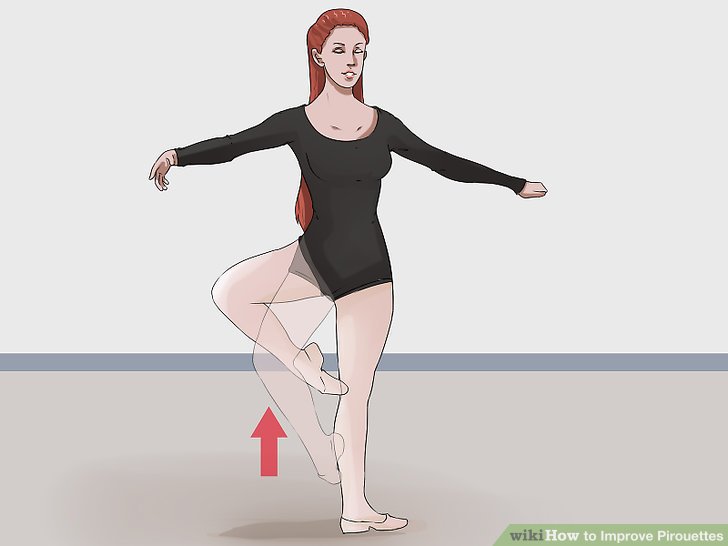
UPDATE: it turns out that Pedro not only debates, but also deletes comments he doesn't like. Here is my comment, which he deleted from the thread, so his last answer is not even very clear:
1. Technical progress and dance have nothing to do with it, we are talking about terminology, the laws of the language - they are the same everywhere, even if we talk about sports ( let's say football in Europe and the USA are completely different footballs), even about technology, even about dancing, even about cooking. The dispute is not about whether kizomba is urban kiz or not kizomba. Debate over what to call it. In my opinion, there is no problem: mathematicians are not confused when they call "geometry" or "logic" all variants of geometries or logics, and when they mean Riemann's geometry or some version of temporal logic. It is not clear why in dance this approach is embarrassing.* * *There is another approach, "copyright" - when the Xerox firm swears that someone says "I have a canon-type copier.
" But I repeat: the language develops according to its own laws, and all that can be done here is to educate. People will not stop calling copiers copiers because the trademark belongs to some company. In the case of dances and their names, the very concept of "belonging" is blurred.
It seems to me that there is no particular problem here if you are engaged in education - just as you can tell people about the photocopier and canon where these words came from, and what they meant before and how they are used now, you can do the same about dance. Yes, there is little information in Russian about the history of kizomba and semba. For example, I tried to make my contribution to this enlightenment:
http://ailev.livejournal.com/1319839.html2. I didn't follow the page before, I only found it a few days ago. Now I will follow
At the same time I found out that Pedro Salakiako teaches semba two minutes walk from my house, and exactly in the same hall where I do kizomba, just on other days -- https://vk.


